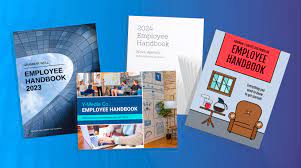
Ways To Set Up Payroll For Your Small Business will be explained in this post. Although setting up payroll for a small business appears simple, there are several processes that developing small businesses need to be aware of. Missing one of these stages may result in severe fines and penalties. Because of this, we’ve put together this simple, nine-step manual on how to set up payroll for your small business. Once you discover how to set up payroll, you should consult an accounting expert to make sure you are adhering to all the specifications for your specific circumstance.
How To Set Up Payroll For Your Small Business In 9 Steps
In this article, you can know about How To Set Up Payroll For Your Small Business In 9 Steps here are the details below;
Throughout the process of setting up a payroll system, an attorney with expertise in the labour laws of your state can be a great help. But, our guide to setting up payroll might help you approach this fascinating but challenging procedure more assuredly and finally enable you to acquire the expertise you require. Here are the nine steps to setting up payroll for your small business:
How to Set Up Payroll for Your Small Business

Remind yourself that setting up payroll for a small business is a meticulous, challenging procedure. The procedure can be outlined in these nine steps, but each small business will have its unique needs and logistical considerations when setting up payroll for the first time. To ensure that you’re setting up your payroll correctly, seek advice from a specialist who is knowledgeable with the specifics of your company.
Step 1: Review the U.S Department of Labor website
Most American firms must abide by a particular set of regulations. To mention a few, these regulations are the Family and Medical Leave Act, the Minimum Wage Law, and the Overtime Rules. Review the Issues area of the US Department of Labor website to get started setting up your payroll for small businesses. To find out which posters you must put in order to comply with federal employment requirements, go to the elaws FirstStep Poster Advisor portion of the DOL website.
Step 2: Review the department of labor website for your state
Federal employment law is governed by the U.S. Department of Labor, while each state has its own labour laws. While setting up payroll for your small business, you must be aware of both federal and state rules. What if the information provided on the website of your state’s labour department conflicts with what you see on the website of the U.S. Department of Labor? As the law typically favours the employee, you should abide by the regulations that do so.
For instance, once an employee works more than 40 hours in a workweek, federal law mandates that overtime be paid. Yet, depending on the number of hours worked in a day, certain states require overtime. When in doubt, consult your accountant or a labour lawyer familiar with the regulations in your state. This can assist ensure that your employees are treated fairly, which will result in a happier workforce and keep you out of trouble with the law.
Step 3: Determine your payroll schedule

The majority of firms process payroll on a weekly, bimonthly, or semimonthly basis. Choose the payroll schedule that you want to employ. When choosing how regularly to pay your staff, keep your company’s cash flow in mind. While you can alter your payroll schedule, you shouldn’t do it frequently because there are rigorous restrictions around paying employees on time. Remember that your state’s regulations may specify the minimum frequency of your payroll schedule, so make sure you compare it to the specifications on the website of your state’s department of labour. Also check Onboarding Software
Step 4: Write your employee handbook

It’s time to draught your employee handbook now that you are aware of the state rules governing payroll in your jurisdiction. Don’t worry if the prospect of writing anything makes you cringe. You can create your employee handbook with the use of a variety of internet tools, or you can hire a human resources expert to do it for you. I strongly advise you to have your employee handbook reviewed by an attorney who focuses on employment law in your state after it has been written. They will ensure that there is no terminology in your employee handbook that might be interpreted as creating a contract between you and your staff. Also, it will guarantee that you have a thorough understanding of the regulations in your state that govern payroll and employment matters.
Step 5: Apply for your federal Employer identification Number (FEIN or EIN)
For tax filing purposes, a lot of sole owners use their Social Security number. But, you must utilize a federal employer identification number, sometimes known as an EIN or FEIN, for employment-related purposes. Your EIN is the number you will use on all business tax filings and forms once you get it. Because of this, many accounting experts strongly advise business owners to get an EIN as soon as they launch their enterprises. Getting an FEIN is simple if you don’t already have one. You can apply online at the IRS website and receive your EIN right away. Download Publication 15 while you’re on the IRS website. This document contains all the information you need to abide by the federal reporting and withholding requirements.
Step 6: Apply for your state withholding and unemployment insurance accounts
You can be required to deduct state income taxes and contribute to your state’s unemployment insurance fund, depending on your state. Local withholding tax laws vary by state. On the websites of your state’s tax commission and unemployment security commission, you can frequently obtain information on your job situation. However, these websites can occasionally be complicated and challenging to use. As in Step 2, speak with your accountant or employment attorney about the laws that apply to your state. It’s time to apply for the tax accounts you require after determining the ones you require. Although you can apply for these accounts online in the majority of states, some still need you to send or fax your application. Let your state up to four weeks to set up your tax accounts and send you the data.
Step 7: Enter your payroll schedule and tax filing due dates in your calendar

You need to make sure you meet all the necessary dates now that you have established your payroll schedule and applied for your FEIN, state withholding account, and unemployment insurance account. Put your paycheck dates in your calendar first. Then, input the deadlines for reporting payroll taxes. Remember that the deadlines for submitting information returns and paying taxes may fluctuate. Moreover, state deadlines may not coincide with federal deadlines. Examine the Publication 15 you downloaded in Step 4 as well as all the information you have received, including your state withholding and unemployment insurance account numbers.
Step 8: Decide who will administer your payroll

Will you be handling payroll in-house or hiring a payroll service provider? Both options have pros and cons. When you manage payroll in-house, you have a little more freedom in terms of when you may process payroll. If you don’t submit your payroll information by the date set by the payroll service provider, they frequently impose a rush fee and demand lead periods of three to five days. But, the busy small business owner finds it appealing that payroll service providers frequently take on full responsibility for the timely submission of tax payments and returns.
I strongly advise adopting an online payroll tool, such as Intuit Online Payroll or Gusto, if you decide to manage payroll internally. This will simplify the processing of your payroll and ensure that all taxes are paid and returns are filed on time. You might be asking why you went through Steps 1-6 at this point.
A payroll service provider will frequently apply for your tax account numbers on your behalf. The majority of payroll software will send you a reminder when it’s time to process payroll, pay taxes, and file information reports. Why then did you perform those initial six steps when they might have been automated? According to our experience, when the business owner is not involved in the process, payroll for small businesses is most frequently set up incorrectly. Working closely with a payroll service provider or using payroll software helps expedite your ongoing payroll process, but it is still crucial for you to be aware of the rules & regulations that apply to your personnel. Also check Payroll Services
Step 9: hire your first employee.

Your payroll system is now operational, you have all of the necessary tax ID numbers, and you have calculated your payroll schedule. It’s time to hire your first staff right away. Get some information from the ideal applicant once you’ve chosen and hired them so that your payroll system can properly set them up. The forms and IDs you must obtain from each new hire are listed below: A Form W-4 that has been correctly filled out, used to calculate the amount of federal withholding tax to be deducted from each paycheck.
Keep track of whether your employee checks the “Exempt” box on Line 7; if so, you’ll need to get a new W-4 at the start of every year. If necessary, a certificate of state withholding tax. For state withholding tax purposes, many states allow you to use Form W-4. A Form I-9 that has been correctly filled out. Section 1 will be finished by your employee, and Part 2 will be finished by you. Pay close attention to the regulations governing the types of identification that can be used on Form I-9. You might want to make copies of these documents and store them safely.
Check the Social Security number of your new hire. Although the Social Security Number Verification Service is free, registration is required in order to use it. By checking your employee’s Social Security number, you can avoid name/SSN conflicts that could result in incomplete yearly report submissions and higher processing expenses. If necessary, submit a new hiring report to your state.
How to Set Up Payroll: The Bottom Line
A significant step for your new business is setting up payroll for your first employees. This accomplishment shows that your company is getting closer to being self-sufficient. Instead than concentrating on performing all the work oneself, employees enable small business owners to focus on the activities that actually strengthen the company. The payroll system for a small business should do the same, relieving the owner of busy labour so they can focus on developing strategies and expanding their company.
Don’t wait to hire the staff you need since you might have to set up payroll for your expanding workforce. You may now concentrate on educating your new employee after going through this extensive payroll setup process. Payroll will integrate effortlessly into your processes during your first payroll run. Small business owner, congratulations!








